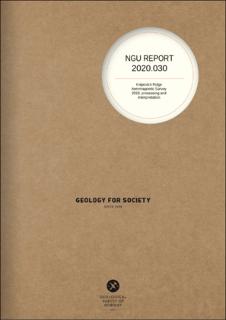| dc.description.abstract | As an ultra-slow spreading ridge in an oblique system located between the Svalbard - Barents Sea and the Northeast Greenland rifted margins, the dynamics of the Knipovich Ridge opening has long been debated. Its 90-degree bend with the Mohn\u2019s Ridge, rare in plate tectonics, affects the evolution of the Fram Strait and motivates the study of crustal deformation with this distinctive configuration. This report comprises the results of the Knipovich Ridge Aeromagnetic Survey 2016 project. Aeromagnetic data were acquired and processed in the Fram Strait on the western coast of Svalbard encompassing the Knipovich Ridge. The aeromagnetic data were merged to data available in the surrounding areas. For the first time, magnetic isochrons related to the spreading of the Knipovich Ridge have been identified. They indicate a spreading initiation at C6 (~20 Ma) and a ridge jump at C5E (~18 Ma). These results were used to reconstruct the plate tectonic development of the area. A 3-D magnetic inversion modelling was also performed on the KRAS-16 aeromagnetic data and compared to the high-resolution bathymetry acquired in the rift valley by the NPD. The higher magnetization was correlated to the presence of volcanic features and bathymetric highs. A 2-D forward modelling was done with available global gravity data compilation, seismic interpretation, and a CSEM \/ MT profile. From the 2-D modelling interpretation, the crustal domains are delineated and confirmed with the Werner deconvolution and the Curie point depth estimation. The continent-ocean boundary (COB) on the east margin is relocated up to 160 km to the west of the location set by previous studies. Therefore, the mapped extent of the oceanic domain is considerably reduced. A wide transition lithospheric domain is also delineated, most likely comprising an exhumed lower crust or mantle. The project was conducted at NGU with financial contribution from the NFR funded EPOS-N project, Geological Survey of Norway (NGU) and Norwegian Petroleum Directorate (NPD) | |

